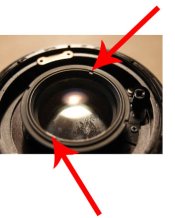So, I just found out one of my lenses is infected with fungus. Quite severe i think (?).
It's on a Hasselblad 80mm T* lens.
My question is: Is it absolutely impossible to dissemble it clean it by myself? Is it possible to be done by a repair man? I would really like to do it myself.
I was planning on selling it, but now I guess it's close to worthless. Is it?
It isn't visible through the viewfinder. Does that make a difference?
Thanks in advance...
It's on a Hasselblad 80mm T* lens.
My question is: Is it absolutely impossible to dissemble it clean it by myself? Is it possible to be done by a repair man? I would really like to do it myself.
I was planning on selling it, but now I guess it's close to worthless. Is it?
It isn't visible through the viewfinder. Does that make a difference?
Thanks in advance...
Attachments
Last edited by a moderator:













